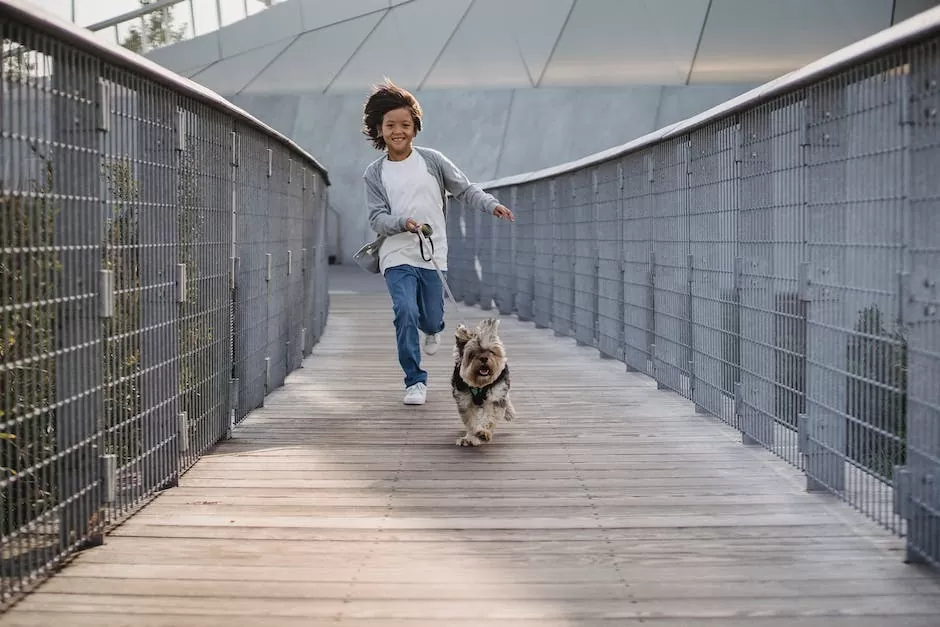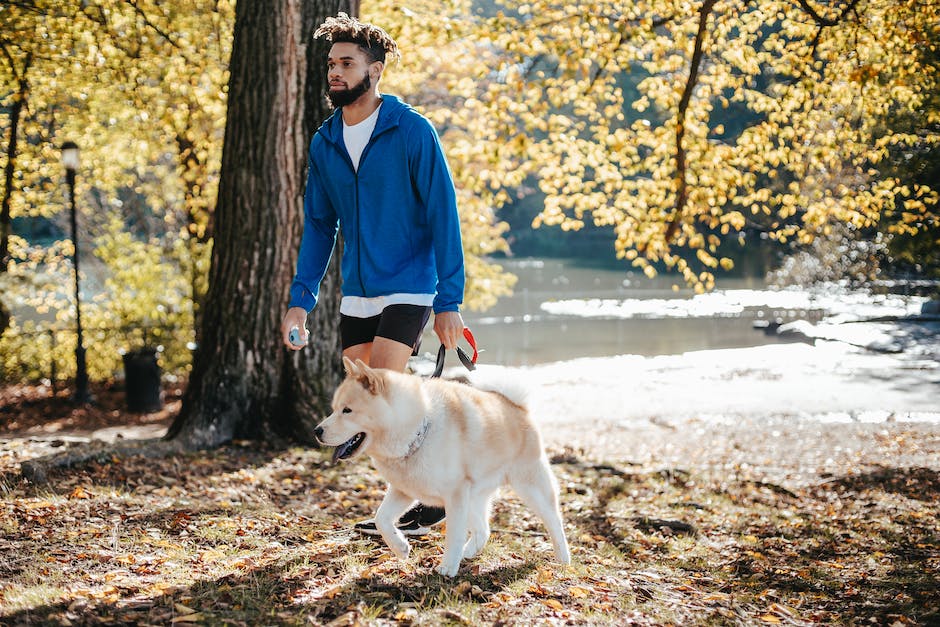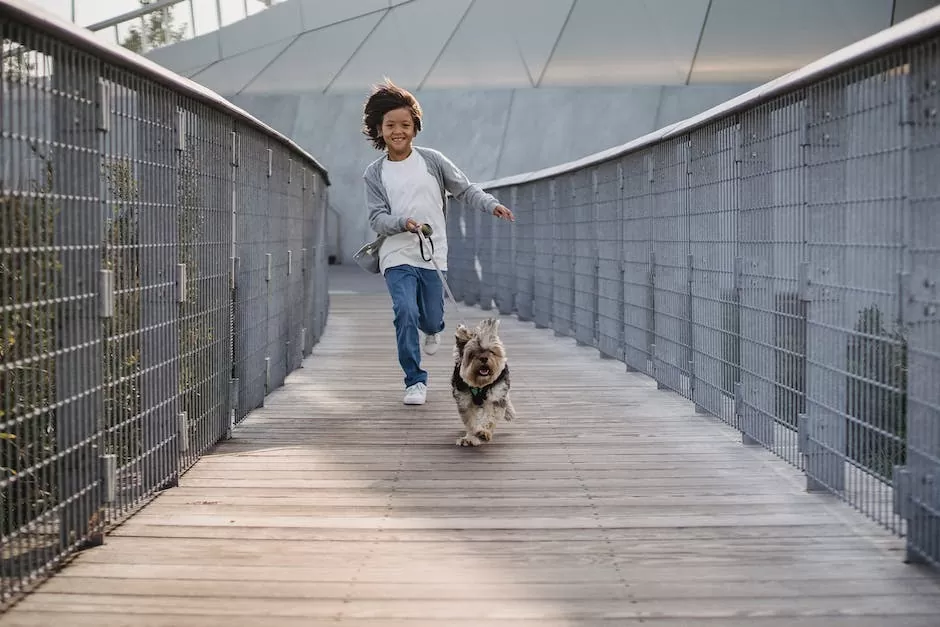How to stop my dog from walking while peeing?

If you’ve noticed that your dog likes to stop and pee while walking, it’s probably because he’s marking his territory. Dogs do this by urinating on objects, like lampposts, trees, and fire hydrants. While it’s perfectly normal behavior, it can be frustrating for dog owners. Luckily, there are a few things you can do to stop your dog from walking while peeing.
There are a few things you can do to stop your dog from walking while peeing. One is to stand next to your dog and give him a firm ‘no’ command when he starts to walk. You can also try using a treats to lure your dog back to the desired spot. Finally, make sure you are taking your dog out frequently enough so that he doesn’t have to go so often.
Why is my dog walking while peeing?
This is a condition called urethral incontinence, and it affects a fair number of dogs, especially female dogs that have been spayed. In many cases, the dog is unaware that she is dribbling urine while walking or after she urinates. If you notice this happening with your dog, it’s best to bring her to the vet to have her checked out.
There are a few different reasons why a dog may leak urine, including a urinary tract infection (UTI) or bladder stones (uroliths). UTIs can cause irritation and inflammation of the urinary tract, which may lead to dribbling or incontinence. Bladder stones can also cause urinary problems, including incontinence, by blocking the flow of urine. If your dog is leaking urine, it’s important to have him checked out by a veterinarian to determine the cause and get appropriate treatment.
Why does my dog squat and walk while peeing
If you notice your dog squatting more than usual, it could be a sign of a medical issue. Arthritis, orthopedic problems, hormonal or neurologic conditions can all cause an increase in squatting behavior. If your dog is also showing signs of urinary incontinence, it’s best to take them to the vet for a check-up.
If you see any of these signs, your dog is probably excited and needs to pee! Be sure to take them outside right away so they can relieve themselves.
Do dogs grow out of submissive peeing?
Puppies become more confident as they grow older. Most puppies outgrow submissive urination before one year of age. Unfortunately, some owners inadvertently encourage the behavior by coddling their nervous youngster.
It is best to spay or neuter your dog before they reach sexual maturity (6-9 months of age) to prevent urine-marking. If your dog has already reached sexual maturity, spaying or neutering them may still help to reduce urine-marking.
Do dogs pee to be defiant?
There’s a lot of misunderstandings about dog emotions and one of them is that dogs pee out of anger. While it’s true that dogs can get angry, this isn’t one of the ways that they express it. Dogs usually pee from excitement or being overstimulated, which can sometimes be misinterpreted as anger by humans. It’s important to learn how to read your dog’s body language so that you can better understand their emotions.
There are a number of natural remedies that can be used to help with dog incontinence. Phytoestrogens, corn silk, saw palmetto and acupuncture are all effective treatments. A grain-free diet can also be helpful in supporting the treatment and preventing the incontinence from occurring in the first place.
Can dog incontinence be cured
There are a variety of surgical treatments available for urinary incontinence in dogs, and the specific procedure will often depend on the underlying cause of the incontinence. Medications may also be used to help treat incontinence, and these will typically be prescribed by a veterinarian. In many cases, a combination of surgical and medical treatment will be necessary to successfully manage urinary incontinence in dogs.
If your dog is submissively urinating, avoid hitting, scolding, or yelling at him/her after the fact. Instead, try to build his/her confidence by teaching simple commands (sit, stay, come) and rewarding him/her after each success. This is the same reward-and-praise process you would use to teach any simple tricks.
How do you deal with submissive peeing?
When your dog submissively urinates, it is important to ignore the behavior. Scolding your dog will only make the problem worse, and praising your dog may only confusion it. Instead, use treats as a form of positive reinforcement.
If your dog urinates submissively, be sure to clean up the area well to eliminate any odors. Do not punish or scold your dog for this behavior, as it will only make the problem worse. If your dog is extremely fearful, ask your veterinarian about medications that may help during the retraining process.
At what age do dogs stop peeing everywhere
Puppies will eventually learn to control their bladders, but it will take some time and patience. In the meantime, confine your puppy to a small area (such as a bathroom) with easy-to-clean flooring. Give your puppy frequent breaks to go outside to relieve himself. Reward your puppy each time he eliminates outdoors with praise and treats. With patience and positive reinforcement, your puppy will learn to hold it until he can go outside.
Spaying or neutering your dog is a responsible way to reduce or eliminate urine marking in many dogs. According to the North American Veterinary Community, as many as 50% of male dogs stop urine marking, or at least do it significantly less often, after being neutered. Neutering also provides health benefits for your dog, such as reducing the risk of some types of cancer. Spaying eliminates the risk of uterine cancer and greatly reduces the risk of breast cancer.
Can you train a dog to stop happy peeing?
When you come back home, if your dog pees, keep your greeting short and low-key, give them a treat, and divert their attention. Over time, this will reduce their excited peeing.
It is very important to never rub a dog’s nose in urine or feces, or punish a dog for an “accident.” This will only teach your dog to fear you, and he may start to hide when he has to “go.” Dogs do not naturally relieve themselves outside; it is only natural for them to not go where they sleep. If you want your dog to start relieving himself outside, you need to be patient and consistent with training.
Warp Up
The best way to stop your dog from walking while peeing is to keep him on a short leash. You can also try to keep him off of grassy areas until he’s done relieving himself.
The best way to stop your dog from walking while peeing is to train them properly. Start by walking them on a leash and making sure they have a good amount of space to move around. If they start to walk while peeing, gently pull them back and provide positive reinforcement when they stop. With consistent training, your dog will eventually learn not to walk while peeing.